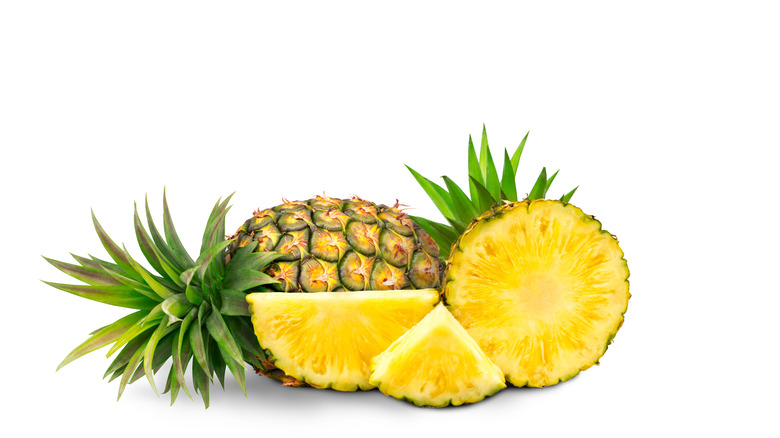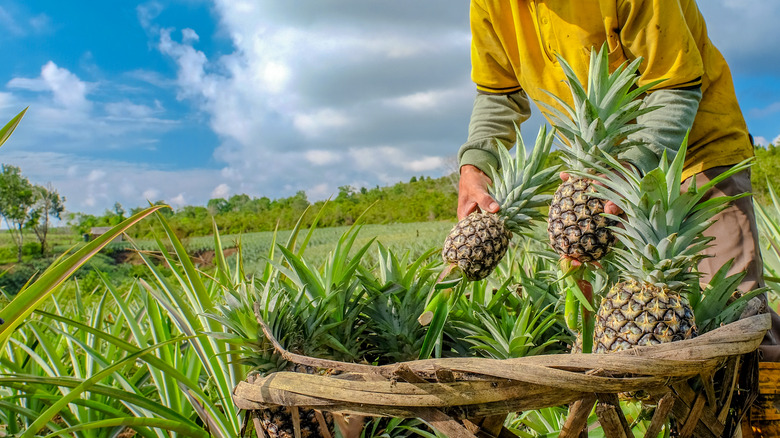The Reason Pineapples Once Cost $8,000 Each
Pineapples may not be anything remarkable in today's society. While the spikey fruit has gained cultural prominence as the home of a certain yellow sponge cartoon, you wouldn't think twice walking by a display full of pineapples at your local grocery store. But, pineapple may have health benefits hidden behind its spiny exterior. Via The Cleveland Clinic, a pineapple contains a rich variety of nutrients and vitamins that may help promote weight loss, tissue healing, and is a great choice for post-workout recovery drinks and snacks.
There are also plenty of dishes one can prepare with a pineapple, from tropical cocktails to pineapple upside-down cake, and even a delicious pineapple curry. It could even be as simple as cutting up chunks of the fruit to eat on their own. While a pineapple's versatility is impressive, what may be more so is the fact that it doesn't cost a lot. At around $2 to $4 a pop, getting one or two certainly won't set your budget back. There was a time, however, that pineapples were such a luxury — and so far removed from the common populace — that they cost an absurd amount of money. The reason for this lies in the advancements of gardening techniques in the 17th century and their connection to royalty, which also begat a trend known as "pineapple renting."
Pineapples were a big luxury item in the 17th century
Since being first "discovered" by Christopher Columbus in 1493 during expeditions to South America, the pineapple immediately found popularity in the explorer's native Spain (via Mental Floss). The spiky, juicy, and sweet fruit from the far-off exotic islands captured everyone's attention. It was soon discovered, however, that it was hard to actually grow the fruit in Spain, as Europe lacked the tropical climate of South America. While more pineapples could be brought over, the resulting trip left the fruits bruised, damaged, and sometimes even rotten.
In the 1770s, however, the "hothouse" method of gardening allowed the planting of these exotic fruits for the first time in Europe. The process involved the use of horse manure and oak bark in the potting process that helped to ensure a warm, tropical-like temperature (via Dumbarton Oaks). Since only very skilled gardeners with a knack for delicate growing could ensure proper cultivation, the elite and the wealthy would hire the best "green thumbs" to maintain and grow their luxurious pineapple crop. Even royalty had pineapple fever, with Catherine the Great and Prince Charles II having an affinity for these tropical fruits, per Royal Collection Trust. So coveted was the pineapple that one could actually "rent" the fruit — not to eat it, but instead to show it off at your next dinner party to impress your guests with how upscale you were (via Foodbeast).
Although later progress in transportation and growing made the pineapple lose its high-end status, it still remains a delicious tropical treat today.

